Posted At: Apr 29, 2024 - 449 Views

Stuck choosing between Flutter and React Native for your mobile app? Get it! These two frameworks are the rockstars of app development, letting you build awesome apps for iPhone and Android with just one codebase (think write once, win twice!).
But here's the thing, they both work a little differently. Flutter's like your all-in-one toolkit, with its own special coding language (Dart) that lets you design super cool, custom UIs. React Native leans on JavaScript, a familiar friend for many developers, and uses pre-built components to create the app's look and feel.
Well, about Flutter and React Native—they are two big players in the game. They both promise to let you whip up slick mobile apps for iOS and Android with just one codebase. Pretty neat, right? But hey, before you jump headfirst into either one, let's talk about the nitty-gritty differences between Flutter and React Native. After all, choosing the right framework can make or break your app dreams.
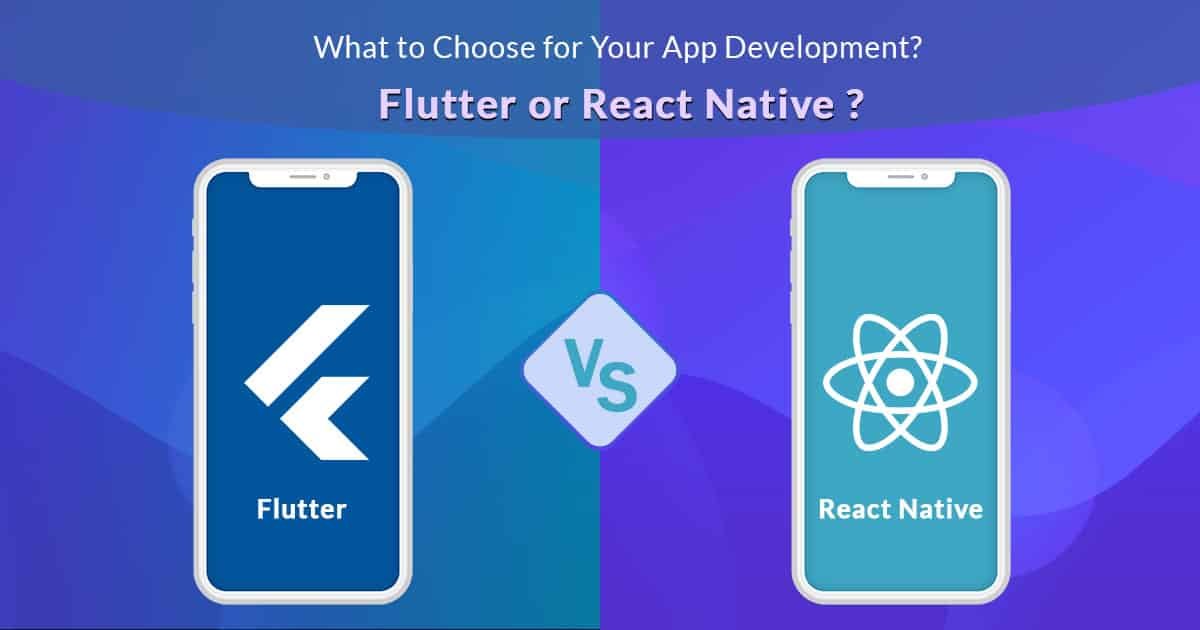
So, here's the deal: Flutter and React Native are both super popular right now. Like, really popular. About 38% of developers are all about React Native, while 42% are singing Flutter's praises. Crazy, right? But which one's the one for you? Well, that depends on a bunch of stuff—your business goals, your target audience, and all those little technical details that can make your head spin.
But don't worry! Here at Virva Infotech, we've got your back. Our top-notch developers have put together a handy-dandy comparison of Flutter vs. React Native. We're talking all the juicy details, laid out plain and simple, so you can make the best choice for your app. And hey, if you've got questions—whether it's about Flutter, React Native, or just how to make the perfect app pancake don't hesitate to hit us up. We're here to help you make your app dreams a reality.
A brief comparison: Flutter vs React Native
Let’s now dive into the details of Flutter development and move to React Native straight after.
What is Flutter?
Released in 2018, courtesy of Google. It's an open-source mobile app development framework that's been turning heads ever since. So, what makes Flutter tick? Well, it's all about building sleek, high-performance apps for both iOS and Android using one codebase. And the secret sauce? Dart.
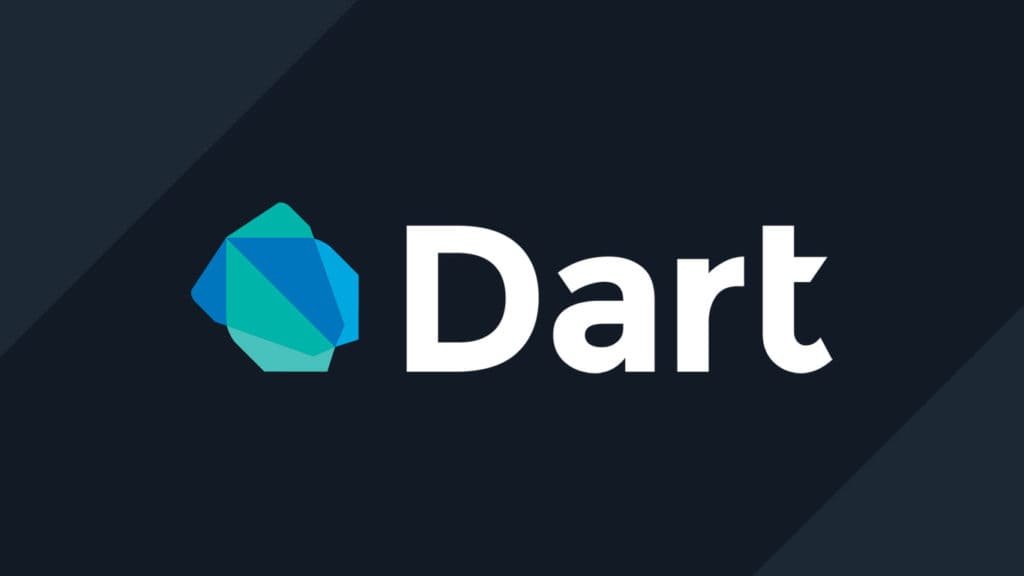 That's the programming language behind Flutter's magic.
That's the programming language behind Flutter's magic.
Think of Flutter as your go-to toolkit for crafting beautiful, cross-platform apps. It's like having a Swiss Army knife in your coding arsenal—versatile, efficient, and ready to tackle any challenge. So if you're a programmer looking to level up your mobile app game, Flutter might just be the tool you've been searching for.
Cross-platform app development in Flutter

In a nutshell. It comes with its own language, Dart, designed specifically for building high-performance apps. Dart lets you work some serious UI magic, so if you're looking for a unique and visually stunning app, Flutter might be your best bud.
Another bonus? Flutter uses its own rendering engine, meaning you have more control over how everything looks and works. This can be a game-changer if you need a super customized user experience.
Here's what makes Flutter a strong contender:
Thriving Community: Flutter boasts a large and ever-growing developer community. This means you'll have access to a wealth of resources, packages, and plugins to supercharge your project.
Customizable Widgets Galore: Flutter offers a rich set of widgets that you can customize to build expressive and high-performance UIs for both iOS and Android.
Hot Reloading for the Win: Say goodbye to tedious app restarts! Flutter's hot reload feature lets you see your code changes reflected instantly, making development a breeze.
Crystal Clear Documentation: Lost in the code? No worries! Flutter's documentation is known for being easy to read, well-structured, and detailed, making it a valuable asset throughout the development process.
One Codebase, Many Platforms: Flutter is truly platform-agnostic. It uses its own widget set, so you can build one app and deploy it across multiple platforms (think Android, iOS, Windows, Linux, macOS, and even the web!). This not only saves development time but also makes it easier to differentiate your apps, update them, and add new features down the line.
Native Feel, Custom Look: The best part? Despite being platform-agnostic, Flutter delivers a native-like user experience that feels smooth and familiar on any device.
A glance at Flutter app performance
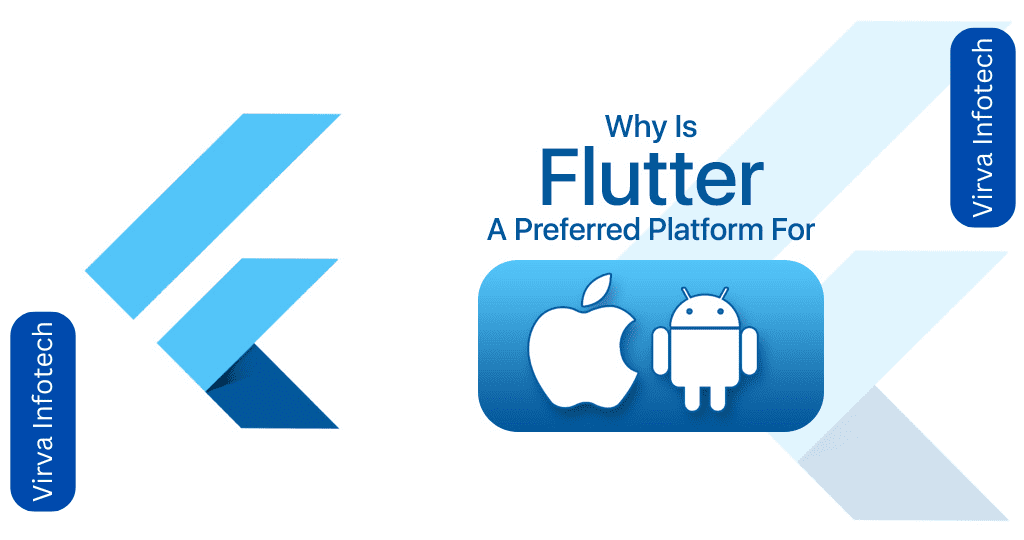
Flutter shines in performance thanks to its reactive programming model and built-in widgets, delivering smooth animations and transitions. Its lightweight Dart runtime and "Ahead-of-Time" compilation ensure quick app startup and reduced runtime processing. The Flutter engine, powered by C++ and Skia, guarantees high-performance mobile and web apps. With Flutter, you get top-notch performance without sacrificing speed or responsiveness. It's the ultimate toolkit for building sleek and fast cross-platform applications.
What is really so distinctive about Flutter?
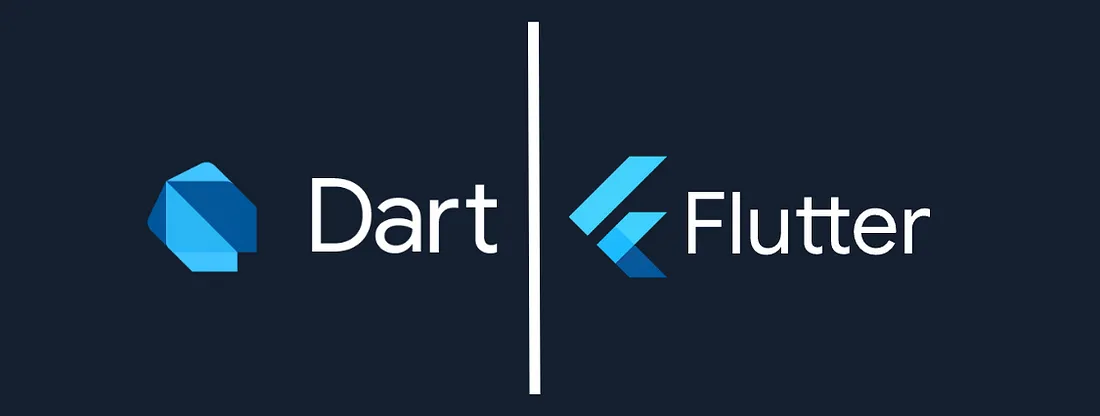
Here's what truly sets Flutter apart from the crowd:
No Middleman, All Muscle: Unlike most frameworks, Flutter ditches the web browser tech and pre-built widget libraries. Instead, it flexes its own powerful rendering engine to draw everything on screen. This gives you more control and smoother performance.
Dart: Your Coding BFF: Flutter uses Dart, a modern object-oriented language that's easy to learn and work with. Plus, since most of Flutter's core is written in Dart, it's simple to customize, tweak, or even replace parts if needed. This flexibility gives developers a ton of power over the final product.
Thin C/C++ Layer: While Dart handles most of the heavy lifting, Flutter does have a thin layer of C/C++ code for essential tasks. This keeps things efficient without bogging down the development process.
What apps are built with Flutter?
Wondering what kind of apps Flutter can build? Buckle up, because the list is impressive!
Big names like Google Pay, Alibaba, Groupon, eBay Motors, and even Toyota have all chosen Flutter to build their apps. These aren't lightweight apps either - they're handling millions of users with ease.
React Native: The Basics
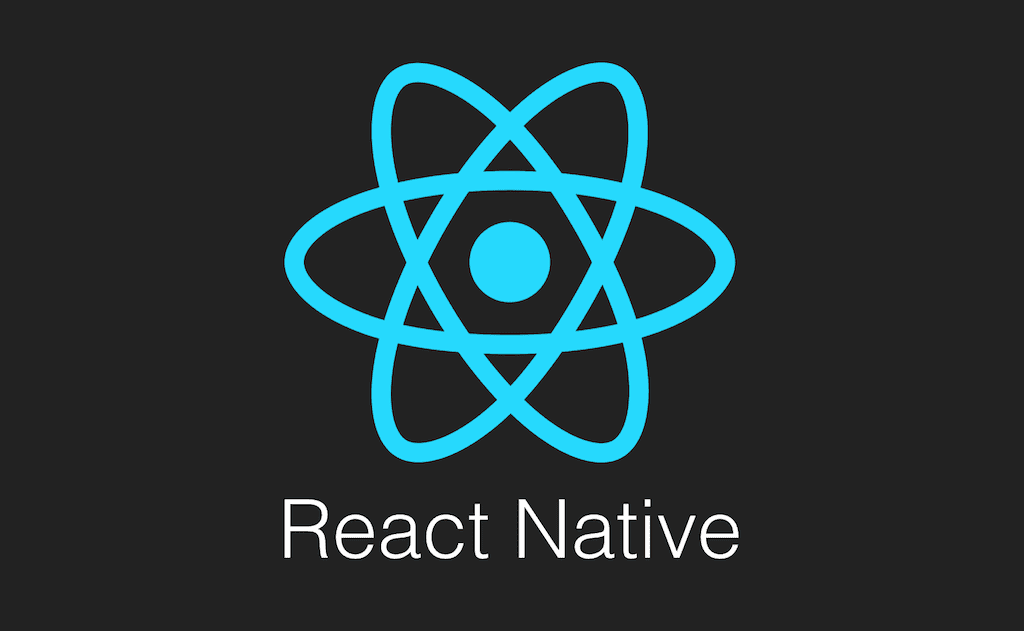
Meet React Native, the brainchild of Facebook back in 2015. It's been making waves ever since as an open-source framework for crafting top-notch mobile apps for iOS and Android.
So, what's the big deal with React Native? Well, for starters, it's all about flexibility. With React Native, developers can harness the power of JavaScript and the React library to build native apps with ease. And let's not forget about those handy native components, seamless platform-specific code, and a community that's second to none. It's like having a superhero team at your fingertips! But what really sets React Native apart? It's the plug-ins, baby! With a plethora of program modules at your disposal, there's no limit to what you can achieve. And developers? They're eating it up like candy on Halloween night!
React Native app development
React Native isn't just a framework—it's a community. With a wide network of support and a robust library and ecosystem, it's no wonder it's a favourite among developers. Plus, third-party UI libraries packed with ready-made components can be a real-time-saver.
But wait, there's more! React Native projects boast lightning-fast deployment of new features across supported platforms, thanks to hot reload. No more waiting around—see your changes in real time and keep the momentum going. With React Native, it's all about speed, efficiency, and accessibility. Whether you're tweaking code in your favourite IDE or putting it through its paces in a text editor, you've got the tools you need to build, test, and deploy with ease.
React Native apps performance overview
React Native is stepping up its game with a fresh approach to communication between native components and JavaScript code. In the past, this communication relied on a bridge for message exchange. The old bridge method involved a process called "serialization," converting data between JavaScript and native code. But here's the catch: this process could slow things down, especially in complex apps.
JavaScript Interface (JSI). With this new bridge communication method, JavaScript and native code can talk directly. No more serialization, no more message exchange, just smooth, high-performance communication. It's like upgrading from a bike to a sports car.
Bridge communication method in React Native
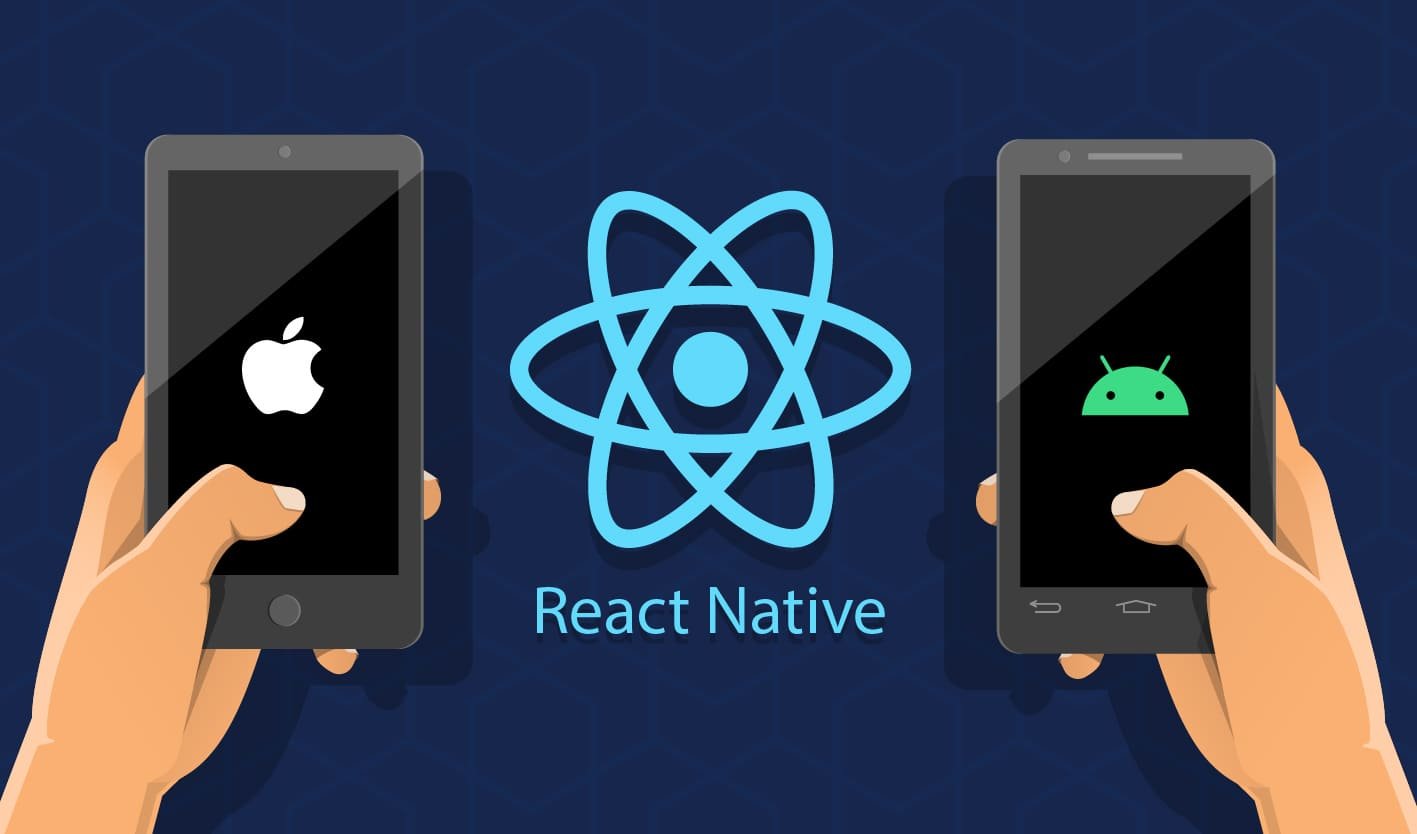
JSI isn't just a fancy acronym—it's a game-changer for React Native developers. Built on the robust JavaScriptCore framework, it's like turbocharging your app's performance. Why? Because JavaScriptCore is tailor-made for running JavaScript on mobile devices, meaning faster performance across the board.
And here's the kicker: JSI brings familiar debugging and optimization tools to the table, straight from the world of web development. Think Chrome DevTools, but for your mobile app. But that's not all. With JSI, developers can tap into JavaScript's garbage collection, keeping memory leaks at bay and supercharging app performance. It's like having a built-in cleanup crew for your code.
React Native's performance gets a turbo boost with the introduction of turbo modules!
Rolled out in React Native 0.63, turbo modules are designed to supercharge the JSI. So, what's the deal with turbo modules? They introduce a new binary format for modules called TMD (TurboModule Definition), which kicks things up a notch in terms of efficiency. This means faster app startup times and smoother overall performance, all by cutting down on the amount of JavaScript that needs to be processed at runtime.
Take the popular React Native library, for example. Thanks to turbo modules, it's able to churn out buttery-smooth animations at a blazing 120 frames per second with react-native-reanimated. It's like giving your app's performance a shot of espresso—fast, powerful, and ready to tackle whatever comes its way.
React Native has caught the eye of some heavy hitters in the tech world, with top international brands jumping on board the React Native train. Check out this star-studded lineup:
Meta: You might know them better as the brains behind Facebook and Instagram.
Pinterest: The go-to platform for inspiration and ideas.
Uber Eats: Bringing delicious meals right to your doorstep.
Shopify: Powering online stores for businesses big and small.
Tesla: Revolutionizing the automotive industry with electric vehicles.
Wix: Making website creation a breeze for millions of users worldwide.
And the list goes on! These are just a few of the big names that have harnessed the power of React Native to deliver top-notch experiences to their users. So if you're looking to join the ranks of these industry giants, React Native might just be the ticket to success.
The main differences between Flutter and React Native
To make the best choice for your project, it's crucial to understand the key differences between these two frameworks. From programming languages to architecture, performance, and beyond, we're diving deep to give you the lowdown. So buckle up—we're about to explore what sets Flutter and React Native apart and help you navigate the tricky waters of mobile app development.
Development speed and maintenance of the mobile apps
When it comes to development speed and maintenance, React Native's use of native UI components can be a double-edged sword. While it offers seamless integration with the latest OS updates, there's a catch: these updates can sometimes break your app's interface. This means you may need to roll up your sleeves for some extra maintenance down the line.
But fear not—React Native automatically adopts any native updates, like changes in navigation gestures, keeping your app up to date without lifting a finger. Flutter, on the other hand, requires manual implementation of these updates, adding a bit more legwork to the process. So while React Native offers automatic integration, Flutter puts the power in your hands to fine-tune your app's performance and interface.
Flutter is a better fit for your MVP
When it comes to building your Minimum Viable Product (MVP), Flutter takes the crown for speed and efficiency. With its extensive library of pre-built components, Flutter slashes development time, allowing you to go from concept to market in record time—sometimes in just a few weeks!
Here's the kicker: Flutter's components are designed to work seamlessly across platforms and operating systems, eliminating the need for platform-specific code. This not only saves developers valuable time but also cuts down on development costs—a win-win for any business looking to launch quickly without breaking the bank. Plus, Flutter was tailor-made for rapid UI development based on Material Design principles. So if speed and simplicity are your top priorities, Flutter is the MVP's best friend.
Behind the React Native slowing down aspects
React Native's reliance on third-party libraries for widgets can be a speed bump in the development process, especially if you're in need of specific components. Unlike Flutter, which comes fully loaded with its own widget library, React Native requires you to hunt down and integrate third-party solutions, potentially slowing things down.
But here's where React Native shines: it's a powerhouse for crafting customized user interfaces. So if your project demands a lot of bespoke solutions, React Native might be the way to go.
When it comes to code reusability, both Flutter and React Native have got your back. However, Flutter edges ahead with its ability to easily overwrite specific parts of the code, saving developers precious time and effort. After all, in the world of app development, time is money—and Flutter knows how to make every second count.
Cross-platform app performance in React Native vs Flutter
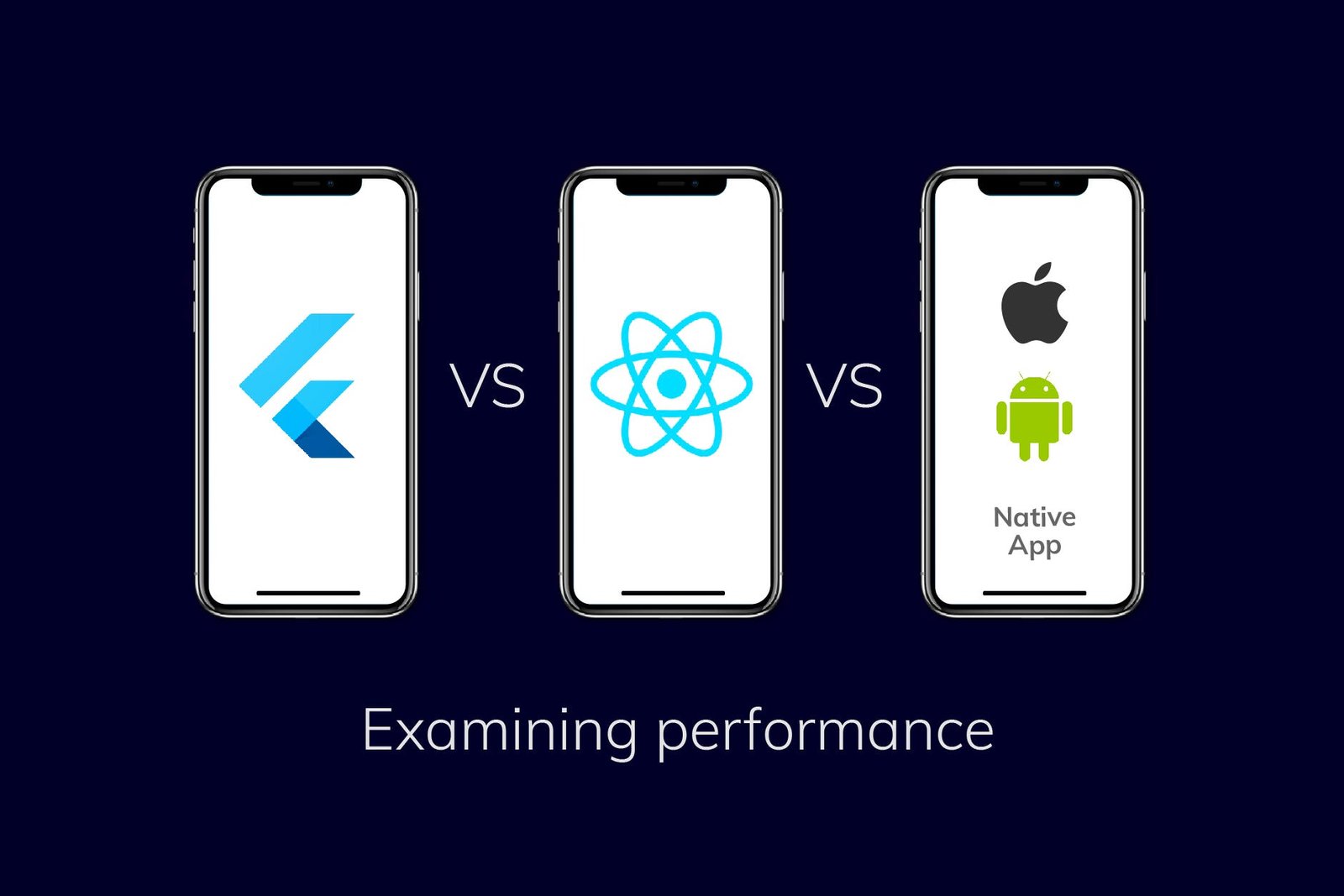
When it comes to performance in cross-platform app development, React Native and Flutter take different routes. React Native relies on a bridge between JavaScript and native modules, while Flutter boasts most components as part of its framework, making for a smoother process.
But here's the kicker: Flutter tends to come out on top in the speed department. Why? Because all Flutter processes are fully native, ensuring lightning-fast performance. On the flip side, React Native's reliance on both JavaScript and native solutions can lead to inefficiencies, making it less than 100% native despite its name.
Take gestures, for example. React Native handles them through both JavaScript and native solutions, creating a bridge between the two that can slow things down. Flutter, on the other hand, keeps it all on the native side, resulting in snappier performance.
So if speed is your top priority, Flutter's the way to go. With its fully native processes, it's the go-to choice for developers looking to create super-swift cross-platform apps that leave the competition in the dust.
React Native vs Flutter app size comparison
When it comes to app size, Flutter and React Native have their own stories to tell. Generally, Flutter apps tend to be on the larger side compared to React Native. The culprit? Flutter's C/C++ engine adds some extra bulk to the package.
But here's the twist: bigger doesn't always mean slower. In fact, Flutter's beefier apps often translate to faster performance in the long run. All those extra features may take up space, but they also contribute to a smoother user experience.
React Native, on the other hand, is playing catch-up in the size department. With the introduction of dedicated engines like Hermes, it's striving to keep app sizes in check without sacrificing performance.
So whether you're Team Flutter or Team React Native, rest assured that both frameworks are working hard to strike the perfect balance between size and speed. After all, in the world of mobile app development, every byte counts!
Debugging in Flutter vs React Native
Debugging in both Flutter and React Native is a breeze. React Native developers can rely on React Native Debugger, a robust tool that seamlessly integrates with Chrome DevTools. Plus, with a vibrant community backing React Native, there's always someone ready to lend a hand when you hit a snag.
On the Flutter side of things, developers have Flutter Doctor—a handy command-line tool that diagnoses and fixes any issues with your Flutter setup. And thanks to Flutter's straightforward syntax, debugging is a walk in the park.
Components Comparison
When it comes to components, Flutter and React Native each have their own approach. In React Native, built-in components rely on native elements provided by the platform, which can sometimes result in inconsistencies in the app's appearance across different platforms if styling isn't carefully managed. Flutter, on the other hand, boasts its own set of built-in widgets meticulously designed for speed and consistency across all platforms.
For custom components, React Native empowers developers to create unique solutions using a blend of JavaScript and native code. Meanwhile, Flutter offers a robust toolkit for building custom widgets, complete with a flexible layout system and efficient renderer.
In terms of reusability, React Native components are generally reusable across platforms, though adjustments may be needed to ensure a consistent look and feel. Flutter takes reusability to the next level, with components designed to maintain a uniform appearance across all platforms.
Development Documentation Aspects
When it comes to development documentation, both React Native and Flutter have their strengths. React Native boasts comprehensive documentation backed by a robust community. With a vast pool of developers at your fingertips, getting help and advice for your React Native projects is just a question away. Whether you're troubleshooting an issue or diving into new features, you can count on the React Native community to have your back.
Flutter, on the other hand, maybe newer to the scene but is quickly gaining momentum with its growing developer base. With a plethora of resources and tutorials available, Flutter developers have access to the tools and support they need to navigate the framework with ease.
Pros and Cons of Code Reuse in Flutter and React Native
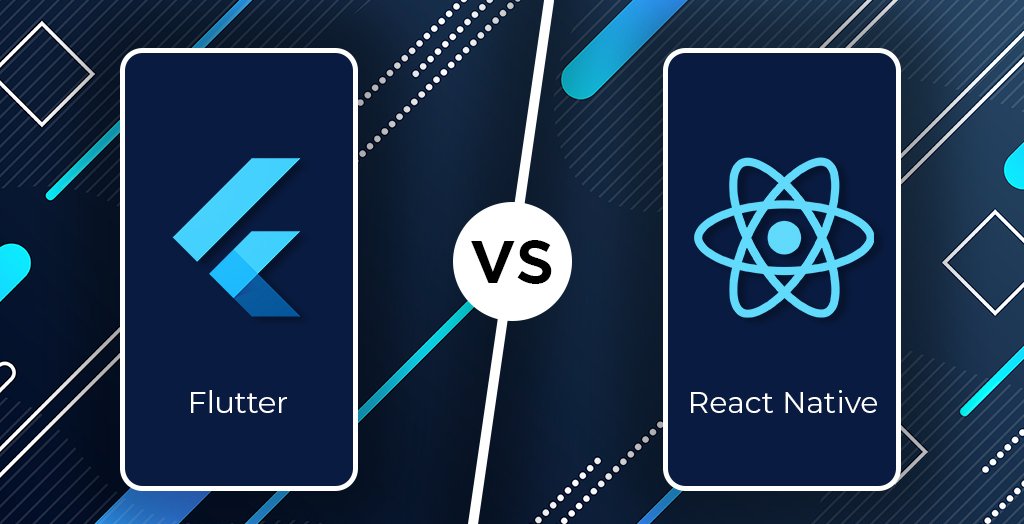
React Native:
Pros:
1. React Native provides a set of APIs that work seamlessly across both iOS and Android devices, making it easier to write code that can be reused between platforms.
2. Developers often start by building their app on one platform and then porting it over to the other, leveraging the shared components to streamline development.
3. React Native offers the flexibility to create shared components between iOS and Android apps, reducing duplication of effort and speeding up development.
Cons:
>Despite its cross-platform capabilities, React Native still requires some platform-specific adjustments and optimizations, particularly when it comes to UI components and performance.
Flutter:
Pros:
1. Flutter allows developers to write apps specifically for each platform, maximizing performance and user experience on both Android and iOS devices.
2. While there's no built-in code sharing between Android and iOS apps, Flutter offers library providers that simplify the integration of native content, making it easier to leverage platform-specific features.
Cons:
1. The lack of automatic code reuse between Android and iOS apps means developers may need to invest additional time and effort into maintaining separate codebases for each platform.
2. While Flutter's approach prioritizes platform-specific optimization, it may result in less code reuse compared to React Native.
In summary, React Native excels in facilitating code reuse between iOS and Android platforms, while Flutter prioritizes platform-specific development for optimal performance. Developers must weigh the trade-offs between code reuse and platform optimization when choosing between the two frameworks.
Learning Curve Difference for Flutter vs React Native Developers
React Native:
Pros:
1. For developers already fluent in JavaScript, React Native offers a relatively shallow learning curve. Its architecture mirrors web development, making it familiar territory for those versed in JavaScript.
2. The mature community surrounding React Native provides ample resources and support, easing the learning process for newcomers.
Cons:
>While JavaScript veterans may find React Native intuitive, newcomers to the mobile app development industry might struggle with concepts like native components and platform APIs.
Flutter:
Pros:
Flutter introduces a steeper learning curve, primarily due to its use of the Dart programming language, which is less widespread than JavaScript.
Despite this, Flutter's architecture is designed to be intuitive and straightforward, potentially speeding up the learning process for developers new to mobile app development.
Cons:
Learning Dart may require some extra effort for developers accustomed to JavaScript. However, Dart's type-safe and object-oriented nature should feel familiar to JavaScript developers, easing the transition.
Google offers extensive documentation and tutorials for Flutter, providing ample resources for developers to accelerate their learning journey.
Both Flutter and React Native are accessible for developers experienced with JavaScript. While React Native may have a gentler learning curve initially, Flutter's intuitive architecture and comprehensive resources can quickly bridge the gap for newcomers. Ultimately, the choice between the two frameworks boils down to your team's existing skill set and project requirements.
Flutter Developers vs React Native Developers: Rates Comparison

When it comes to Flutter and React Native developers, one significant difference lies in the salary gap across different levels of development expertise. For junior developers, salaries can range from around 30,000+ USD per year, depending on factors such as company size and project complexity. As developers gain experience and move up the ladder, senior developers can command salaries upwards of 60,000+ USD per year.
While these figures can vary significantly based on geographic location and market demand, it's worth noting that software engineering costs in European countries typically fall between those in the US and Southeast Asian countries.
Ultimately, the salary gap between Flutter and React Native developers reflects the growing demand for mobile app development expertise and the value placed on experienced professionals in the field.
Main Advantages of Flutter
Flutter boasts several key advantages that set it apart in the realm of mobile app development:
Consistent User Interface: Flutter makes scaling across platforms and operating systems a breeze, thanks to its uniform UI components. This ensures that your app's interface looks the same whether it's running on iOS or Android. Say goodbye to compatibility headaches across different OS versions!
Speed of Development: Need to hit the ground running? Flutter's rapid development pace has got you covered. With Flutter, you can build and iterate on your app at lightning speed, keeping up with the demands of today's fast-paced development landscape.
Speed of the App: It's not just development that's fast—Flutter apps themselves are lightning-quick. Thanks to its efficient rendering engine and optimized performance, Flutter delivers snappy, responsive experiences that keep users engaged and satisfied.
Flutter's ability to deliver consistent UI, coupled with its speed of development and app performance, makes it the go-to choice for developers looking to create high-quality, cross-platform mobile apps that leave a lasting impression.
Up to 50% Less Testing in Flutter
With Flutter's cross-platform capabilities, testing becomes more efficient, potentially cutting your workload in half:
Dual Testing Efficiency: Since Flutter enables you to create two versions of your app for different platforms, you can streamline your quality assurance process by running similar tests on both versions. This means you can cover the same ground on iOS and Android simultaneously, reducing your QA workload by up to 50%.
Reduced QA Time: By testing both platforms simultaneously, you not only cut down on the number of tests needed but also reduce the overall QA time. This allows your team to focus on other critical aspects of app development, accelerating the time-to-market.
However, it's essential to note that manual testing is still required, similar to native programming. QA specialists will need to manually examine both versions of the app for each platform to ensure a seamless user experience across all devices.
In summary, Flutter's ability to create dual-platform apps significantly streamlines the testing process, potentially saving your team valuable time and resources.
Main Advantages of React Native
React Native brings a wealth of benefits to the table, making it a top choice for many developers:
Established Ecosystem: As an older and more established framework compared to Flutter, React Native boasts a thriving ecosystem of apps, libraries, and integrations. Its widespread adoption means there's ample community support and a wealth of resources available to developers.
Familiarity with JavaScript: React Native's reliance on JavaScript makes it a natural fit for web developers. With no need to learn additional languages, developers can hit the ground running and leverage their existing JavaScript skills to build powerful mobile apps.
Specialized Solutions: In certain scenarios, React Native may be the exclusive choice. For tasks requiring specialized solutions like stable biometrics authentication or integration with KYC services, React Native's maturity and robustness make it the go-to option.
React Native vs Flutter: Which is Better?
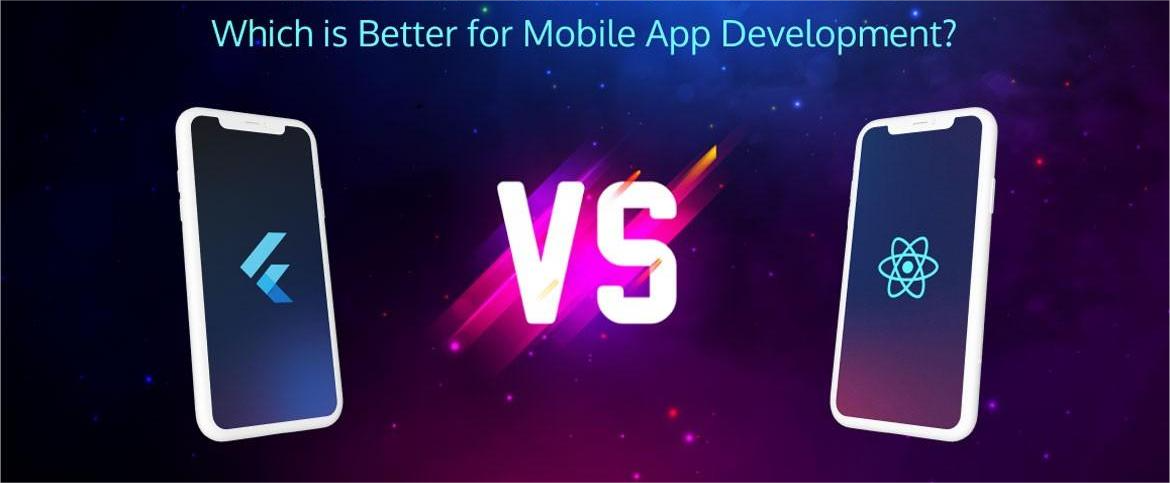
When it comes to the age-old question of React Native vs Flutter, the answer isn't so clear-cut:
React Native is well-suited for web developers, offering a familiar environment and a vast array of resources.
Flutter, on the other hand, targets native app developers with its streamlined development process and exceptional performance.
Ultimately , the choice between React Native and Flutter hinges on your specific needs and resources. While React Native's longevity and familiarity may appeal to some, Flutter's innovative approach and swift development pace make it an enticing option for others.

So, here's the deal: Flutter and React Native are both super popular right now. Like, really popular. About 38% of developers are all about React Native, while 42% are singing Flutter's praises. Crazy, right? But which one's the one for you? Well, that depends on a bunch of stuff—your business goals, your target audience, and all those little technical details that can make your head spin.
But don't worry! Here at Virva Infotech, we've got your back. Our top-notch developers have put together a handy-dandy comparison of Flutter vs. React Native. We're talking all the juicy details, laid out plain and simple, so you can make the best choice for your app. And hey, if you've got questions—whether it's about Flutter, React Native, or just how to make the perfect app pancake
—don't hesitate to hit us up. We're here to help you make your app dreams a reality.
So, which one's the winner? Let's unpack this further…
A brief comparison: Flutter vs React Native
Let’s now dive into the details of Flutter development and move to React Native straight after.
What is Flutter?
Released in 2018, courtesy of Google. It's an open-source mobile app development framework that's been turning heads ever since. So, what makes Flutter tick? Well, it's all about building sleek, high-performance apps for both iOS and Android using one codebase. And the secret sauce? Dart.

That's the programming language behind Flutter's magic.
Think of Flutter as your go-to toolkit for crafting beautiful, cross-platform apps. It's like having a Swiss Army knife in your coding arsenal—versatile, efficient, and ready to tackle any challenge. So if you're a programmer looking to level up your mobile app game, Flutter might just be the tool you've been searching for.
Cross-platform app development in Flutter

In a nutshell. It comes with its own language, Dart, designed specifically for building high-performance apps. Dart lets you work some serious UI magic, so if you're looking for a unique and visually stunning app, Flutter might be your best bud.
Another bonus? Flutter uses its own rendering engine, meaning you have more control over how everything looks and works. This can be a game-changer if you need a super customized user experience.
Here's what makes Flutter a strong contender:
Thriving Community: Flutter boasts a large and ever-growing developer community. This means you'll have access to a wealth of resources, packages, and plugins to supercharge your project.
Customizable Widgets Galore: Flutter offers a rich set of widgets that you can customize to build expressive and high-performance UIs for both iOS and Android.
Hot Reloading for the Win: Say goodbye to tedious app restarts! Flutter's hot reload feature lets you see your code changes reflected instantly, making development a breeze.
Crystal Clear Documentation: Lost in the code? No worries! Flutter's documentation is known for being easy to read, well-structured, and detailed, making it a valuable asset throughout the development process.
One Codebase, Many Platforms: Flutter is truly platform-agnostic. It uses its own widget set, so you can build one app and deploy it across multiple platforms (think Android, iOS, Windows, Linux, macOS, and even web!). This not only saves development time but also makes it easier to differentiate your apps, update them, and add new features down the line.
Native Feel, Custom Look: The best part? Despite being platform-agnostic, Flutter delivers a native-like user experience that feels smooth and familiar on any device.
A glance at Flutter app performance

Flutter shines in performance thanks to its reactive programming model and built-in widgets, delivering smooth animations and transitions. Its lightweight Dart runtime and "Ahead-of-Time" compilation ensure quick app startup and reduced runtime processing. The Flutter engine, powered by C++ and Skia, guarantees high-performance mobile and web apps. With Flutter, you get top-notch performance without sacrificing speed or responsiveness. It's the ultimate toolkit for building sleek and fast cross-platform applications.
What is really so distinctive about Flutter?
Here's what truly sets Flutter apart from the crowd:

No Middleman, All Muscle: Unlike most frameworks, Flutter ditches the web browser tech and pre-built widget libraries. Instead, it flexes its own powerful rendering engine to draw everything on screen. This gives you more control and smoother performance.
Dart: Your Coding BFF: Flutter uses Dart, a modern object-oriented language that's easy to learn and work with. Plus, since most of Flutter's core is written in Dart, it's simple to customize, tweak, or even replace parts if needed. This flexibility gives developers a ton of power over the final product.
Thin C/C++ Layer: While Dart handles most of the heavy lifting, Flutter does have a thin layer of C/C++ code for essential tasks. This keeps things efficient without bogging down the development process.
What apps are built with Flutter?
Wondering what kind of apps Flutter can build? Buckle up, because the list is impressive!
Big names like Google Pay, Alibaba, Groupon, eBay Motors, and even Toyota have all chosen Flutter to build their apps. These aren't lightweight apps either - they're handling millions of users with ease.
Want proof? Just check out some of the awesome Flutter projects we've cooked up here at Virva Infotech (shameless plug, we know).
React Native: The Basics
Meet React Native, the brainchild of Facebook back in 2015. It's been making waves ever since as an open-source framework for crafting top-notch mobile apps for iOS and Android.

So, what's the big deal with React Native? Well, for starters, it's all about flexibility. With React Native, developers can harness the power of JavaScript and the React library to build native apps with ease. And let's not forget about those handy native components, seamless platform-specific code, and a community that's second to none. It's like having a superhero team at your fingertips!
But what really sets React Native apart? It's the plug-ins, baby! With a plethora of program modules at your disposal, there's no limit to what you can achieve. And developers? They're eating it up like candy on Halloween night!
React Native app development
React Native isn't just a framework—it's a community. With a wide network of support and a robust library and ecosystem, it's no wonder it's a favorite among developers. Plus, third-party UI libraries packed with ready-made components can be a real time-saver.
But wait, there's more! React Native projects boast lightning-fast deployment of new features across supported platforms, thanks to hot reload. No more waiting around—see your changes in real-time and keep the momentum going. With React Native, it's all about speed, efficiency, and accessibility. Whether you're tweaking code in your favorite IDE or putting it through its paces in a text editor, you've got the tools you need to build, test, and deploy with ease.
React Native apps performance overview
React Native is stepping up its game with a fresh approach to communication between native components and JavaScript code. In the past, this communication relied on a bridge for message exchange. The old bridge method involved a process called "serialization," converting data between JavaScript and native code. But here's the catch: this process could slow things down, especially in complex apps.
JavaScript Interface (JSI). With this new bridge communication method, JavaScript and native code can talk directly. No more serialization, no more message exchange, just smooth, high-performance communication. It's like upgrading from a bike to a sports car.
Bridge communication method in React Native
JSI isn't just a fancy acronym—it's a game-changer for React Native developers. Built on the robust JavaScriptCore framework, it's like turbocharging your app's performance.Why? Because JavaScriptCore is tailor-made for running JavaScript on mobile devices, meaning faster performance across the board.

And here's the kicker: JSI brings familiar debugging and optimization tools to the table, straight from the world of web development. Think Chrome DevTools, but for your mobile app. But that's not all. With JSI, developers can tap into JavaScript's garbage collection, keeping memory leaks at bay and supercharging app performance. It's like having a built-in cleanup crew for your code.
React Native's performance gets a turbo boost with the introduction of turbo modules!
Rolled out in React Native 0.63, turbo modules are designed to supercharge the JSI. So, what's the deal with turbo modules? They introduce a new binary format for modules called TMD (TurboModule Definition), which kicks things up a notch in terms of efficiency. This means faster app startup times and smoother overall performance, all by cutting down on the amount of JavaScript that needs to be processed at runtime.
Take the popular React Native library, for example. Thanks to turbo modules, it's able to churn out buttery-smooth animations at a blazing 120 frames per second with react-native-reanimated. It's like giving your app's performance a shot of espresso—fast, powerful, and ready to tackle whatever comes its way.
React Native has caught the eye of some heavy hitters in the tech world, with top international brands jumping on board the React Native train. Check out this star-studded lineup:
Meta: You might know them better as the brains behind Facebook and Instagram.
Pinterest: The go-to platform for inspiration and ideas.
Uber Eats: Bringing delicious meals right to your doorstep.
Shopify: Powering online stores for businesses big and small.
Tesla: Revolutionizing the automotive industry with electric vehicles.
Wix: Making website creation a breeze for millions of users worldwide.
And the list goes on! These are just a few of the big names that have harnessed the power of React Native to deliver top-notch experiences to their users. So if you're looking to join the ranks of these industry giants, React Native might just be the ticket to success.
The main differences between Flutter and React Native
To make the best choice for your project, it's crucial to understand the key differences between these two frameworks. From programming languages to architecture, performance, and beyond, we're diving deep to give you the lowdown. So buckle up—we're about to explore what sets Flutter and React Native apart and help you navigate the tricky waters of mobile app development.
Development speed and maintenance of the mobile apps
When it comes to development speed and maintenance, React Native's use of native UI components can be a double-edged sword. While it offers seamless integration with the latest OS updates, there's a catch: these updates can sometimes break your app's interface. This means you may need to roll up your sleeves for some extra maintenance down the line.
But fear not—React Native automatically adopts any native updates, like changes in navigation gestures, keeping your app up to date without lifting a finger. Flutter, on the other hand, requires manual implementation of these updates, adding a bit more legwork to the process. So while React Native offers automatic integration, Flutter puts the power in your hands to fine-tune your app's performance and interface.
Flutter as a better fit for your MVP
When it comes to building your Minimum Viable Product (MVP), Flutter takes the crown for speed and efficiency. With its extensive library of pre-built components, Flutter slashes development time, allowing you to go from concept to market in record time—sometimes in just a few weeks!
Here's the kicker: Flutter's components are designed to work seamlessly across platforms and operating systems, eliminating the need for platform-specific code. This not only saves developers valuable time but also cuts down on development costs—a win-win for any business looking to launch quickly without breaking the bank. Plus, Flutter was tailor-made for rapid UI development based on Material Design principles. So if speed and simplicity are your top priorities, Flutter is the MVP's best friend.
Behind the React Native slowing down aspects
React Native's reliance on third-party libraries for widgets can be a speed bump in the development process, especially if you're in need of specific components. Unlike Flutter, which comes fully loaded with its own widget library, React Native requires you to hunt down and integrate third-party solutions, potentially slowing things down.
But here's where React Native shines: it's a powerhouse for crafting customized user interfaces. So if your project demands a lot of bespoke solutions, React Native might be the way to go.
When it comes to code reusability, both Flutter and React Native have got your back. However, Flutter edges ahead with its ability to easily overwrite specific parts of the code, saving developers precious time and effort. After all, in the world of app development, time is money—and Flutter knows how to make every second count.
Cross-platform apps performance in React Native vs Flutter
When it comes to performance in cross-platform app development, React Native and Flutter take different routes. React Native relies on a bridge between JavaScript and native modules, while Flutter boasts most components as part of its framework, making for a smoother process.

But here's the kicker: Flutter tends to come out on top in the speed department. Why? Because all Flutter processes are fully native, ensuring lightning-fast performance. On the flip side, React Native's reliance on both JavaScript and native solutions can lead to inefficiencies, making it less than 100% native despite its name.
Take gestures, for example. React Native handles them through both JavaScript and native solutions, creating a bridge between the two that can slow things down. Flutter, on the other hand, keeps it all on the native side, resulting in snappier performance.
So if speed is your top priority, Flutter's the way to go. With its fully native processes, it's the go-to choice for developers looking to create super-swift cross-platform apps that leave the competition in the dust.
React Native vs Flutter app size comparison
When it comes to app size, Flutter and React Native have their own stories to tell. Generally, Flutter apps tend to be on the larger side compared to React Native. The culprit? Flutter's C/C++ engine adds some extra bulk to the package.
But here's the twist: bigger doesn't always mean slower. In fact, Flutter's beefier apps often translate to faster performance in the long run. All those extra features may take up space, but they also contribute to a smoother user experience.
React Native, on the other hand, is playing catch-up in the size department. With the introduction of dedicated engines like Hermes, it's striving to keep app sizes in check without sacrificing performance.
So whether you're Team Flutter or Team React Native, rest assured that both frameworks are working hard to strike the perfect balance between size and speed. After all, in the world of mobile app development, every byte counts!
Debugging in Flutter vs React Native
Debugging in both Flutter and React Native is a breeze. React Native developers can rely on React Native Debugger, a robust tool that seamlessly integrates with Chrome DevTools. Plus, with a vibrant community backing React Native, there's always someone ready to lend a hand when you hit a snag.
On the Flutter side of things, developers have Flutter Doctor—a handy command-line tool that diagnoses and fixes any issues with your Flutter setup. And thanks to Flutter's straightforward syntax, debugging is a walk in the park.
Components Comparison
When it comes to components, Flutter and React Native each have their own approach.
In React Native, built-in components rely on native elements provided by the platform, which can sometimes result in inconsistencies in the app's appearance across different platforms if styling isn't carefully managed. Flutter, on the other hand, boasts its own set of built-in widgets meticulously designed for speed and consistency across all platforms.
For custom components, React Native empowers developers to create unique solutions using a blend of JavaScript and native code. Meanwhile, Flutter offers a robust toolkit for building custom widgets, complete with a flexible layout system and efficient renderer.
In terms of reusability, React Native components are generally reusable across platforms, though adjustments may be needed to ensure a consistent look and feel. Flutter takes reusability to the next level, with components designed to maintain a uniform appearance across all platforms.
Development Documentation Aspects
When it comes to development documentation, both React Native and Flutter have their strengths.
React Native boasts comprehensive documentation backed by a robust community. With a vast pool of developers at your fingertips, getting help and advice for your React Native projects is just a question away. Whether you're troubleshooting an issue or diving into new features, you can count on the React Native community to have your back.
Flutter, on the other hand, may be newer to the scene but is quickly gaining momentum with its growing developer base. With a plethora of resources and tutorials available, Flutter developers have access to the tools and support they need to navigate the framework with ease.
Pros and Cons of Code Reuse in Flutter and React Native
When it comes to code reuse between mobile platforms, React Native and Flutter have their own set of pros and cons.

React Native:
Pros:
1. React Native provides a set of APIs that work seamlessly across both iOS and Android devices, making it easier to write code that can be reused between platforms.
2. Developers often start by building their app on one platform and then porting it over to the other, leveraging the shared components to streamline development.
3. React Native offers the flexibility to create shared components between iOS and Android apps, reducing duplication of effort and speeding up development.
Cons:
>Despite its cross-platform capabilities, React Native still requires some platform-specific adjustments and optimizations, particularly when it comes to UI components and performance.
Flutter:
Pros:
1. Flutter allows developers to write apps specifically for each platform, maximizing performance and user experience on both Android and iOS devices.
2. While there's no built-in code sharing between Android and iOS apps, Flutter offers library providers that simplify the integration of native content, making it easier to leverage platform-specific features.
Cons:
1. The lack of automatic code reuse between Android and iOS apps means developers may need to invest additional time and effort into maintaining separate codebases for each platform.
2. While Flutter's approach prioritizes platform-specific optimization, it may result in less code reuse compared to React Native.
In summary, React Native excels in facilitating code reuse between iOS and Android platforms, while Flutter prioritizes platform-specific development for optimal performance. Developers must weigh the trade-offs between code reuse and platform optimization when choosing between the two frameworks.
Learning Curve Difference for Flutter vs React Native Developers
Choosing the right framework isn't just about features—it's also about the learning curve, especially if your team is already familiar with one platform. So, let's break down the differences between Flutter and React Native.
React Native:
Pros:
1. For developers already fluent in JavaScript, React Native offers a relatively shallow learning curve. Its architecture mirrors web development, making it familiar territory for those versed in JavaScript.
2. The mature community surrounding React Native provides ample resources and support, easing the learning process for newcomers.
Cons:
>While JavaScript veterans may find React Native intuitive, newcomers to the mobile app development industry might struggle with concepts like native components and platform APIs.
Flutter:
Pros:
Flutter introduces a steeper learning curve, primarily due to its use of the Dart programming language, which is less widespread than JavaScript.
Despite this, Flutter's architecture is designed to be intuitive and straightforward, potentially speeding up the learning process for developers new to mobile app development.
Cons:
Learning Dart may require some extra effort for developers accustomed to JavaScript. However, Dart's type-safe and object-oriented nature should feel familiar to JavaScript developers, easing the transition.
Google offers extensive documentation and tutorials for Flutter, providing ample resources for developers to accelerate their learning journey.
Both Flutter and React Native are accessible for developers experienced with JavaScript. While React Native may have a gentler learning curve initially, Flutter's intuitive architecture and comprehensive resources can quickly bridge the gap for newcomers. Ultimately, the choice between the two frameworks boils down to your team's existing skill set and project requirements.
Flutter Developers vs React Native Developers: Rates Comparison

When it comes to Flutter and React Native developers, one significant difference lies in the salary gap across different levels of development expertise. For junior developers, salaries can range from around 30,000+ USD per year, depending on factors such as company size and project complexity. As developers gain experience and move up the ladder, senior developers can command salaries upwards of 60,000+ USD per year.
While these figures can vary significantly based on geographic location and market demand, it's worth noting that software engineering costs in European countries typically fall between those in the US and Southeast Asian countries.
Ultimately, the salary gap between Flutter and React Native developers reflects the growing demand for mobile app development expertise and the value placed on experienced professionals in the field.
Main Advantages of Flutter
Flutter boasts several key advantages that set it apart in the realm of mobile app development:
Consistent User Interface: Flutter makes scaling across platforms and operating systems a breeze, thanks to its uniform UI components. This ensures that your app's interface looks the same whether it's running on iOS or Android. Say goodbye to compatibility headaches across different OS versions!
Speed of Development: Need to hit the ground running? Flutter's rapid development pace has got you covered. With Flutter, you can build and iterate on your app at lightning speed, keeping up with the demands of today's fast-paced development landscape.
Speed of the App: It's not just development that's fast—Flutter apps themselves are lightning-quick. Thanks to its efficient rendering engine and optimized performance, Flutter delivers snappy, responsive experiences that keep users engaged and satisfied.
Flutter's ability to deliver consistent UI, coupled with its speed of development and app performance, makes it the go-to choice for developers looking to create high-quality, cross-platform mobile apps that leave a lasting impression.
Up to 50% Less Testing in Flutter
With Flutter's cross-platform capabilities, testing becomes more efficient, potentially cutting your workload in half:
Dual Testing Efficiency: Since Flutter enables you to create two versions of your app for different platforms, you can streamline your quality assurance process by running similar tests on both versions. This means you can cover the same ground on iOS and Android simultaneously, reducing your QA workload by up to 50%.
Reduced QA Time: By testing both platforms simultaneously, you not only cut down on the number of tests needed but also reduce the overall QA time. This allows your team to focus on other critical aspects of app development, accelerating the time-to-market.
However, it's essential to note that manual testing is still required, similar to native programming. QA specialists will need to manually examine both versions of the app for each platform to ensure a seamless user experience across all devices.
In summary, Flutter's ability to create dual-platform apps significantly streamlines the testing process, potentially saving your team valuable time and resources.
Main Advantages of React Native
React Native brings a wealth of benefits to the table, making it a top choice for many developers:
Established Ecosystem: As an older and more established framework compared to Flutter, React Native boasts a thriving ecosystem of apps, libraries, and integrations. Its widespread adoption means there's ample community support and a wealth of resources available to developers.
Familiarity with JavaScript: React Native's reliance on JavaScript makes it a natural fit for web developers. With no need to learn additional languages, developers can hit the ground running and leverage their existing JavaScript skills to build powerful mobile apps.
Specialized Solutions: In certain scenarios, React Native may be the exclusive choice. For tasks requiring specialized solutions like stable biometrics authentication or integration with KYC services, React Native's maturity and robustness make it the go-to option.
React Native vs Flutter: Which is Better?

When it comes to the age-old question of React Native vs Flutter, the answer isn't so clear-cut:
React Native is well-suited for web developers, offering a familiar environment and a vast array of resources.
Flutter, on the other hand, targets native app developers with its streamlined development process and exceptional performance.
Ultimately , the choice between React Native and Flutter hinges on your specific needs and resources. While React Native's longevity and familiarity may appeal to some, Flutter's innovative approach and swift development pace make it an enticing option for others.


